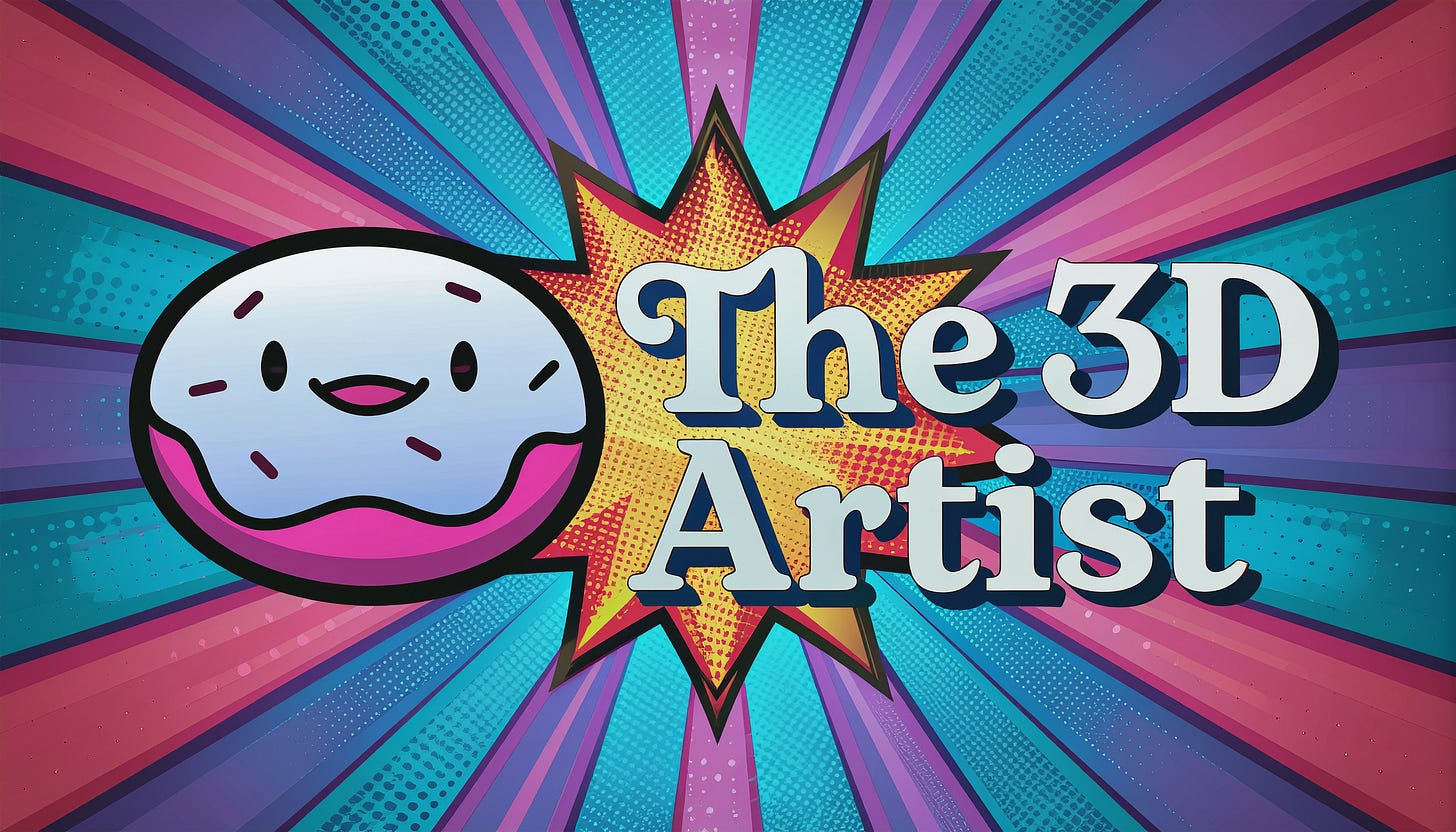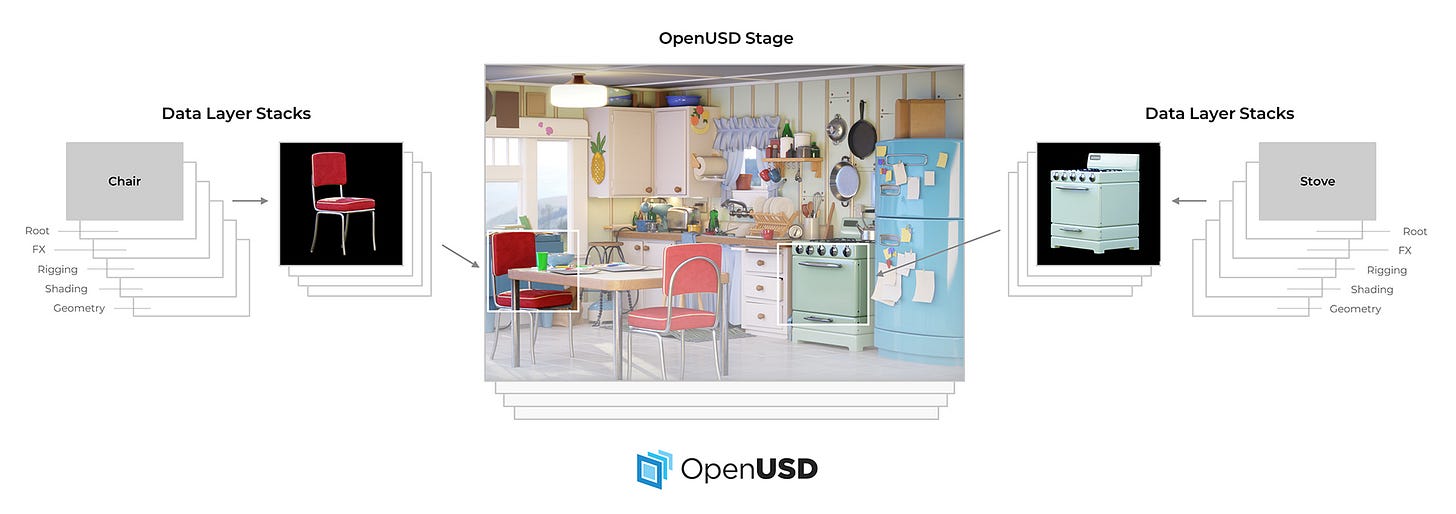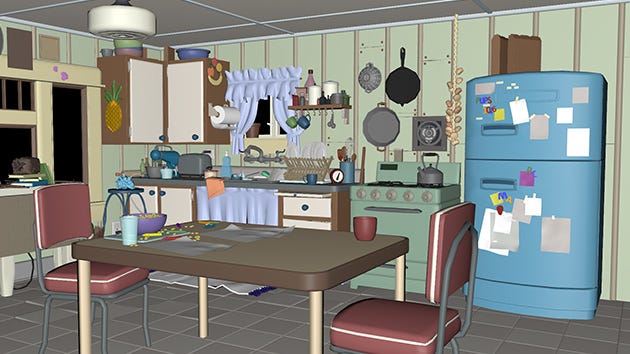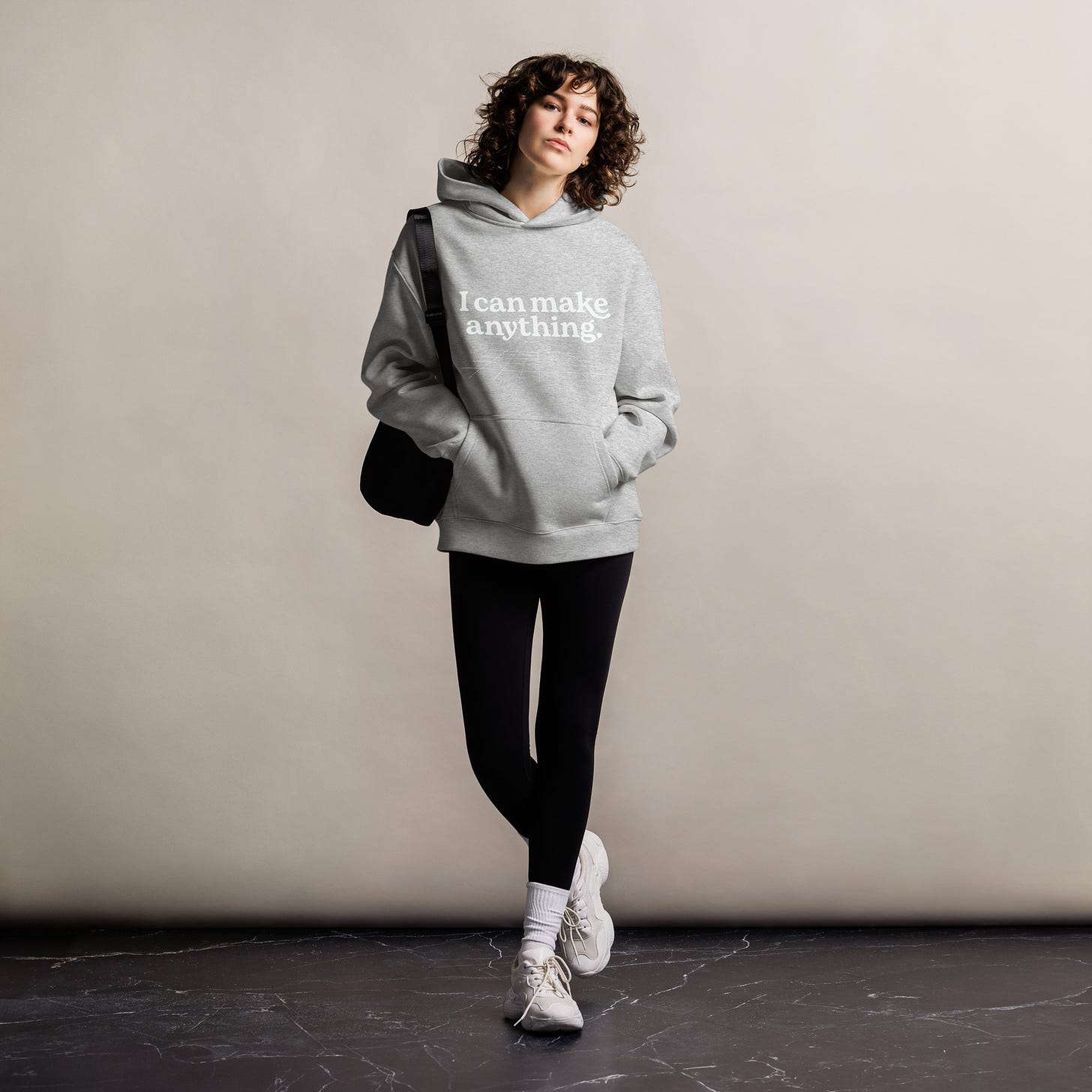A while back, I wrote an article about the USD file format and how it’s the file type we’ve always needed in the 3D space.
USD (short for Universal Scene Description) is designed to be a universal format that can, in theory, be opened in any 3D application while carrying all the necessary information to allow you to continue working seamlessly. No translation headaches, no rebuilding materials, no jumping through hoops to see your assets.
And that’s awesome.
But that’s only part of the story.
Because USD files can do something else - something that doesn’t get talked about nearly enough - and that’s what I want to dig into today.
Beyond Portability: Enter the “Super USD”
Most people view USD as a universal carrier, much like a better FBX or Alembic. But there’s a hidden superpower here: the ability to embed massive amounts of data - models, materials, animations, variations, metadata, logic - all inside a single file.
I’ve heard a few names tossed around for this, from the “150% digital twin” to my personal favorite: the Super USD.
And once you understand what it can do, it does feel super.
Let’s Talk About Image Files for a Second
To explain this, let me step back and use an analogy familiar to most 3D artists: image formats.
A JPEG is your bare-bones version: light, fast, and compressed. Good enough for a quick preview.
A TIFF step ups the ante - more data, more detail, and alpha channels baked in.
Then came the EXR, which changed everything. Now you had a single file that could carry a massive dynamic range (values well beyond 0–1) and hold all your render layers—diffuse, specular, shadows, SSS, reflections, etc.—in one place.
Suddenly, instead of managing a folder of ten different files for one shot, you had a single robust file with everything inside. The EXR became the industry standard for a reason. It streamlined compositing, made pipelines smoother, and kept artists focused on the creative work.
USD Is to Scenes What EXR Is to Images
That’s how I think about the USD file format. It's like the EXR of 3D scene files.
Sure, an OBJ or Alembic file might get you the basic 3D geometry, like a JPEG gets you the pixels. Maybe an Alembic file includes some animation and materials, like a TIFF adds some depth.
But a Super USD? That’s your EXR. That’s the deep file format. That’s the whole ball of wax.
Imagine opening a USD file of a kitchen. Not only does it contain the full 3D model, but it also includes:
Multiple colorways (material variations) for garments
Swappable props (maybe a pot of soup or a sizzling branzino on the stove)
Multivariant countertops (wood, marble, formica, etc.)
Lighting setups (morning, night, golden hour, etc)
Animation options (you can easily swap out the animation of a happy couple in the kitchen or an emotional argument between family members.)
It’s not just a kitchen scene. It’s a whole system of creative options. And it’s all inside one file.
Why It Matters (Beyond Entertainment)
This isn’t just for animated movies or VFX work either.
Imagine you're a company selling a product that ships globally. That product might come in different:
colors
sizes
languages
regional packaging formats
tech specs
You could create a hundred separate files to manage all of that.
Or you could create a Super USD.
Now your marketing team, your localization team, your automation pipeline - everyone - has one file to pull from. It’s flexible, powerful, and easy to script against.
The Only Problem? You Can’t See It (Yet)
The only downside? Most of these types of USDs are locked behind closed doors. Big companies are doing it, but many of those files don’t really exist publicly right now.
And part of the reason is that creating a Super USD file today still requires a very high level of technical know-how. We're talking about software engineers and pipeline developers who can manipulate USD layers, references, and variants using Python and command-line tools. There's no user-friendly GUI, no drag-and-drop solution for building these rich, layered files. For the rest of us mere mortals—artists, designers, even tech-savvy creatives—it’s still mostly inaccessible.
If you know of more Super USDs that are publicly available, please send them my way. I’d love to dig into more and show people what’s possible.
Final Thoughts
The bottom line is that the USD file format isn’t just a better FBX or OBJ. It’s a container for creative possibility. A single USD can hold more than just geometry - it can hold choice.
And that’s a game changer.
The 3D Artist Community Updates
We got Patrick4D joining the 3DAC for an AMA this week!
Patrick Foley, known online as Patrick4D, is a digital artist and creative director based in Atlanta, Georgia, renowned for his hyper-realistic 3D artwork in the food, product, and lifestyle space. With a background in cinematography and commercial film, Patrick blends his sharp eye for lighting and composition with technical mastery in tools like Cinema 4D, ZBrush, and Octane Render.
After studying Film & Television at SCAD, Patrick transitioned into 3D art, where his stunning visual style and consistent online presence quickly earned him a loyal following and collaborations with global brands like McDonald’s, Dunkin’, and Candy Crush. His work is not only visually striking but also steeped in cinematic quality, thanks to his roots behind the camera.
Beyond client work, Patrick is passionate about demystifying the 3D workflow. He shares behind-the-scenes tutorials, sells digital assets, and inspires thousands of artists through his classes and social content. His approach combines artistry, discipline, and a deep commitment to continuous learning.
3D Merch is here and we have a new hoodie!
3D News of the Week
Apple Vision Pro just got serious competition from micro-OLED headsets with better specs - T3
Imagining Authentic Buddhist Four Heavenly Kings Statue Using Substance 3D - 80.lv
JangaFX: Q2 2025 Update Live Stream - YouTube
Adobe releases ‘created without generative AI’ tag to label human-generated art - Fast Company
AnimAID | The Art of Animation Auction Taking Place - Sothebys
3D Tutorial
3D Job Spreadsheet
Link to Google Doc With A TON of Jobs in Animation (not operated by me)
Hello! Michael Tanzillo here. I am the Head of Technical Artists with the Substance 3D Growth team at Adobe. Previously, I was a Senior Artist on animated films at Blue Sky Studios/Disney with credits including three Ice Age movies, two Rios, Peanuts, Ferdinand, Spies in Disguise, and Epic.
In addition to his work as an artist, I am the Co-Author of the book Lighting for Animation: The Visual Art of Storytelling and the Co-Founder of The Academy of Animated Art, an online school that has helped hundreds of artists around the world begin careers in Animation, Visual Effects, and Digital Imaging. I also created The 3D Artist Community on Skool and this newsletter.
www.michaeltanzillo.com
Free 3D Tutorials on the Michael Tanzillo YouTube Channel
Thanks for reading The 3D Artist! Subscribe for free to receive new posts and support my work. All views and opinions are my own!














